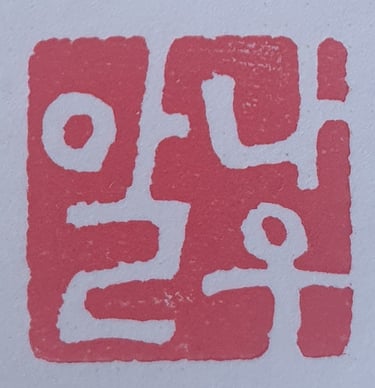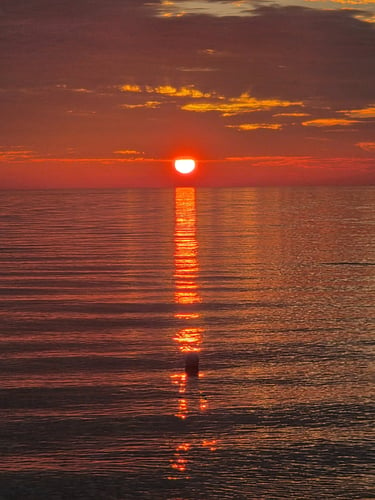
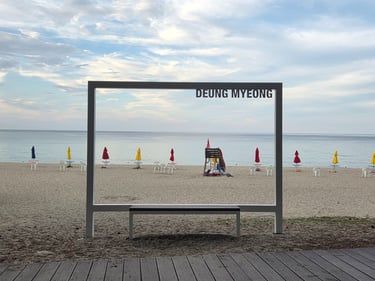
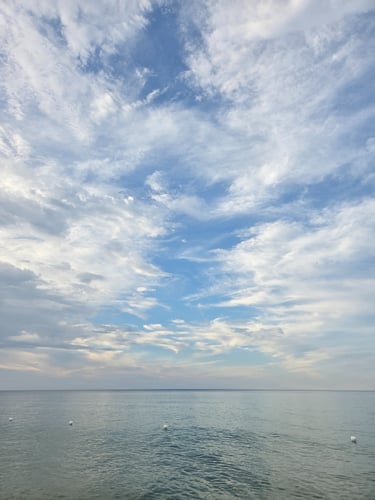
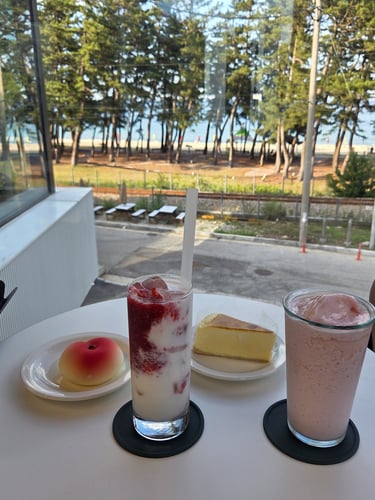

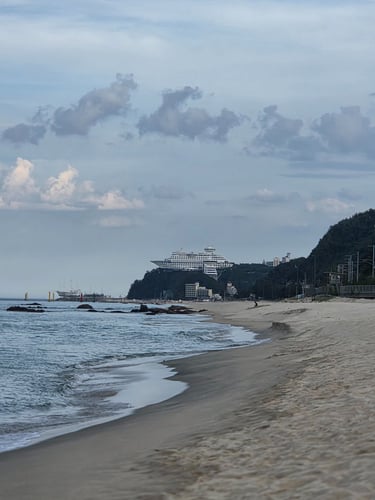
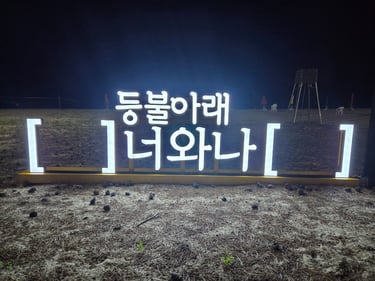

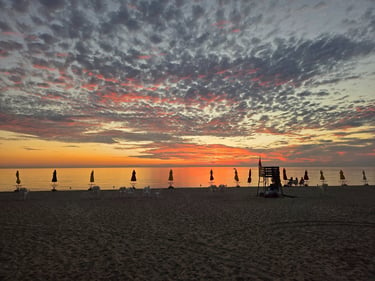
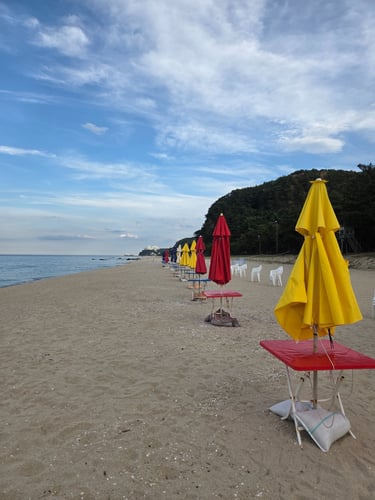
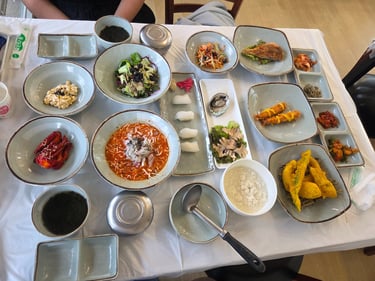
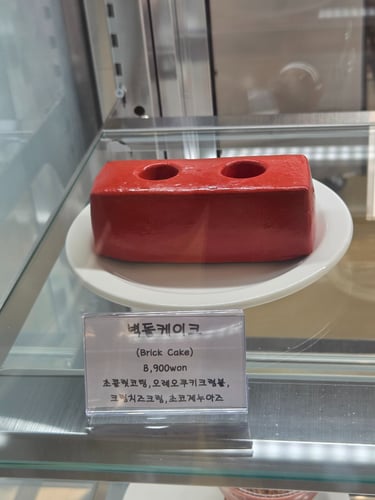












Gagneung - between sea and light
Gangneung is soothing with its light.
There, the sea seems to breathe slowly, as if to remind us that beauty can also be calm and silent.
The beaches stretch as far as the eye can see, lined with maritime pines and cafés with discreet charm, where you can savor the moment as much as the landscape.
The mornings are almost unreal in their clarity: the sun rises over the horizon, setting the sky ablaze with gold and pink, while the waves lap at the sand in a steady, almost meditative motion.
In the evening, another kind of poetry takes hold, that of the salty wind and the lanterns lit along the beach.
Gangneung is also a table facing the sea.
Here you can taste exceptionally fresh seafood: shellfish, blue crabs, octopus, and local sashimi, often served with a simple bowl of rice and crunchy seaweed.
Each bite tells the story of the sea, the patience of the fishermen, and the generosity of this eastern coast.
As I explored this small town, I felt that Gangneung lives at its own pace, which is gentler and more sincere.
It is a place where you can breathe, dream, and experience Korea in a different way—between the murmur of the waves and the simple warmth of those who live there.
Sin Saim-dang's house
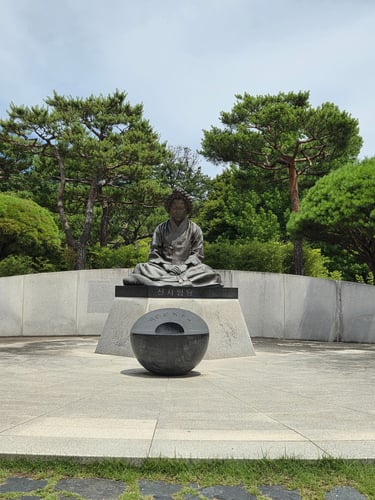
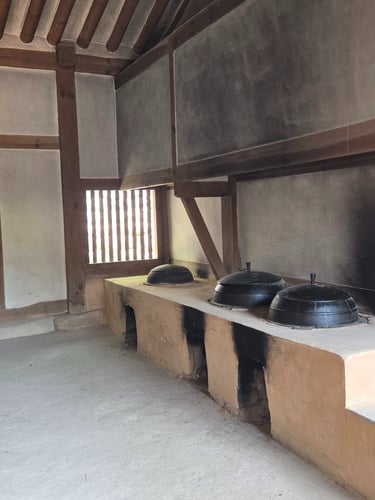
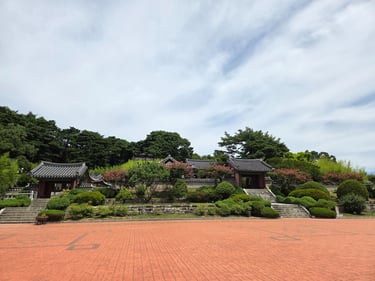
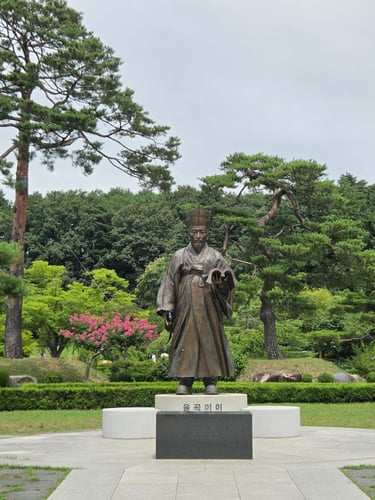
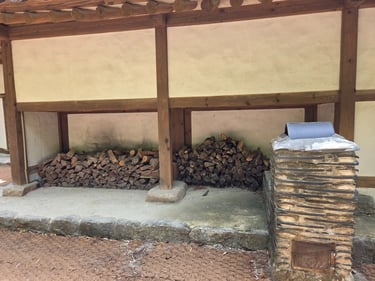
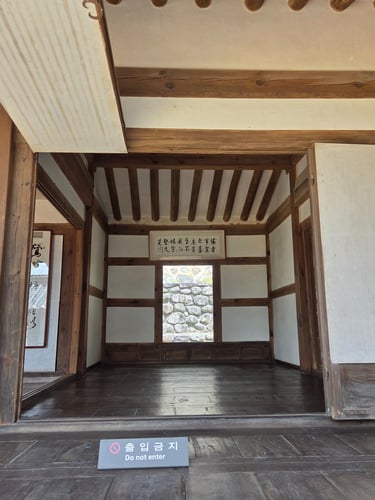
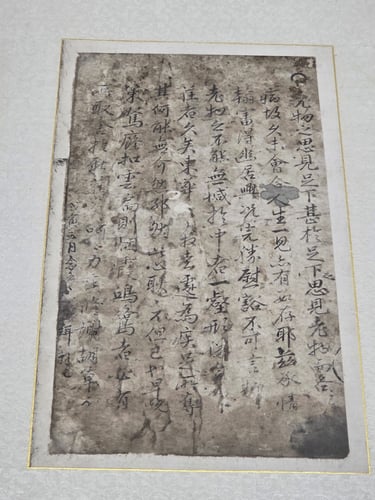
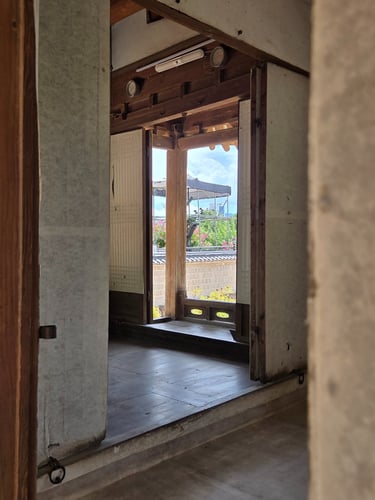
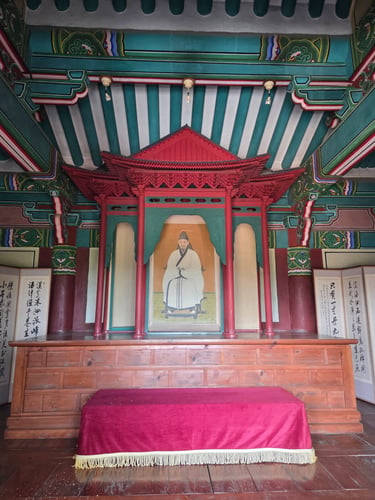
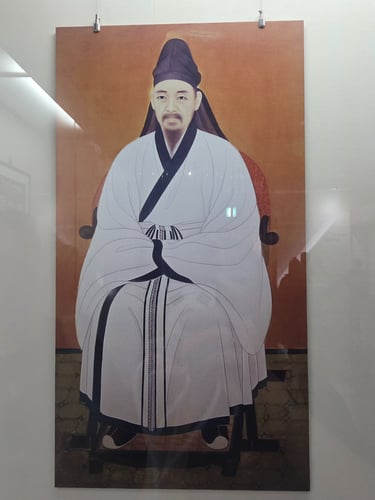
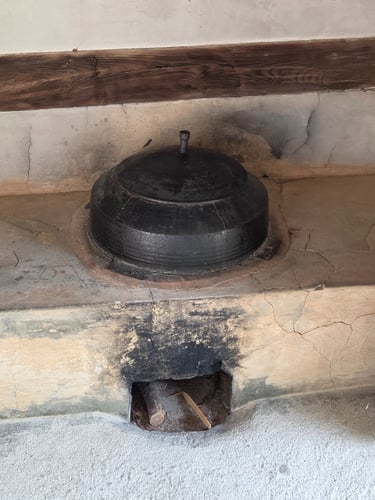
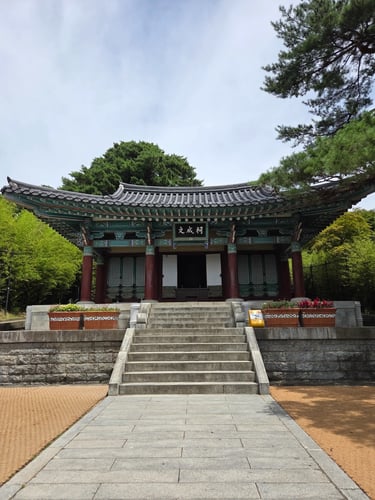
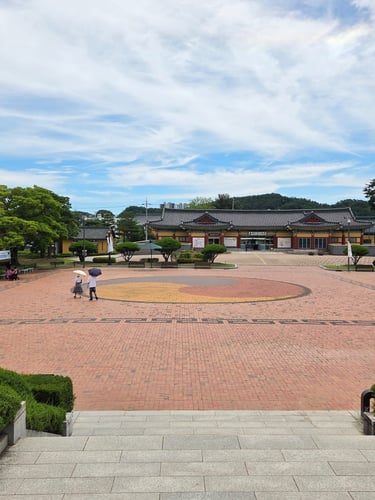













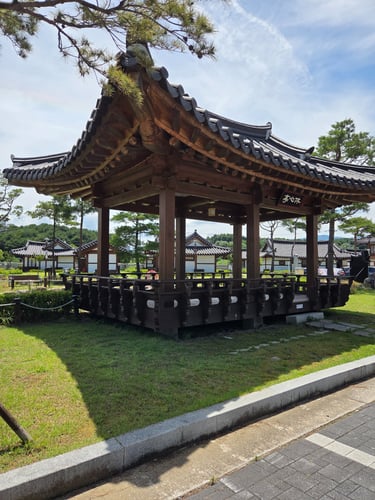

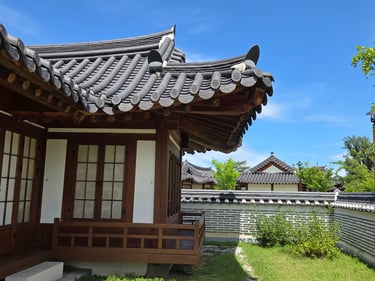
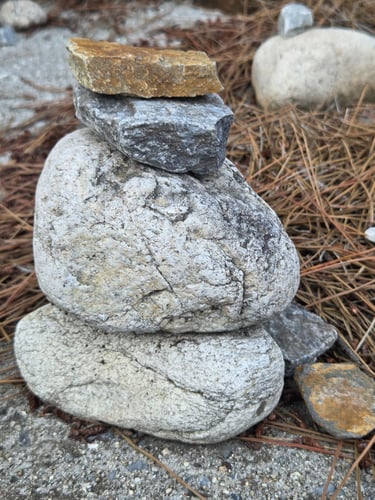




In certain Korean beliefs (dating back even before Buddhism), these piles of stones were used to guide the spirits of the dead to the afterlife.
Each stone symbolized a prayer to appease the soul or help the deceased find peace.
Even today, in rural areas or near ancient sites, this gesture of remembrance can still be found: a stone placed to ensure a safe journey—for the living as well as the dead.
